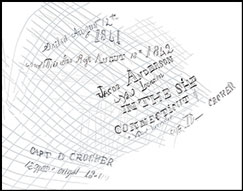Crossref Citations
This article has been cited by the following publications. This list is generated based on data provided by
Crossref.
Paterson, Alistair
and
Veth, Peter
2020.
The point of pearling: Colonial pearl fisheries and the historical translocation of Aboriginal and Asian workers in Australia’s Northwest.
Journal of Anthropological Archaeology,
Vol. 57,
Issue. ,
p.
101143.
BYRNE, CHAE
DOOLEY, TOM
MANNE, TIINA
PATERSON, ALISTAIR
and
DOTTE‐SAROUT, EMILIE
2020.
Island survival: The anthracological and archaeofaunal evidence for colonial‐era events on Barrow Island, north‐west Australia.
Archaeology in Oceania,
Vol. 55,
Issue. 1,
p.
15.
McDonald, Jo
Beckett, Emma
Hacker, Jorg
Morrison, Patrick
and
O’Leary, Michael
2020.
Seeing the Landscape: Multiple Scales of Visualising Terrestrial Heritage on Rosemary Island (Dampier Archipelago).
Open Quaternary,
Vol. 6,
Issue. ,
Paterson, Alistair
Shellam, Tiffany
Veth, Peter
Mulvaney, Ken
Anderson, Ross
Dortch, Joe
and
McDonald, Jo
2020.
TheMermaid?Re-envisaging the 1818 exploration of Enderby Island, Murujuga, Western Australia.
The Journal of Island and Coastal Archaeology,
Vol. 15,
Issue. 2,
p.
284.
McDonald, Jo
Mulvaney, Ken
Beckett, Emma
Fairweather, John
Morrison, Patrick
de Koning, Sarah
Dortch, Joe
and
Jeffries, Peter
2021.
Seeing and managing rock art at Nganjarli: A tourist destination in Murujuga National Park, Western Australia.
Australian Archaeology,
Vol. 87,
Issue. 3,
p.
268.
Leach, Jerem
Wiseman, Chelsea
O’Leary, Michael
McDonald, Jo
McCarthy, John
Morrison, Patrick
Jeffries, Peter
Hacker, Jorg
Ulm, Sean
Bailey, Geoff
and
Benjamin, Jonathan
2021.
The integrated cultural landscape of North Gidley Island: Coastal, intertidal and nearshore archaeology in Murujuga (Dampier Archipelago), Western Australia.
Australian Archaeology,
Vol. 87,
Issue. 3,
p.
251.
Stevens, Amy
and
McDonald, Jo
2024.
Deep-Time Images in the Age of Globalization.
p.
219.





